November 13, 2016
Martha O'Kennon
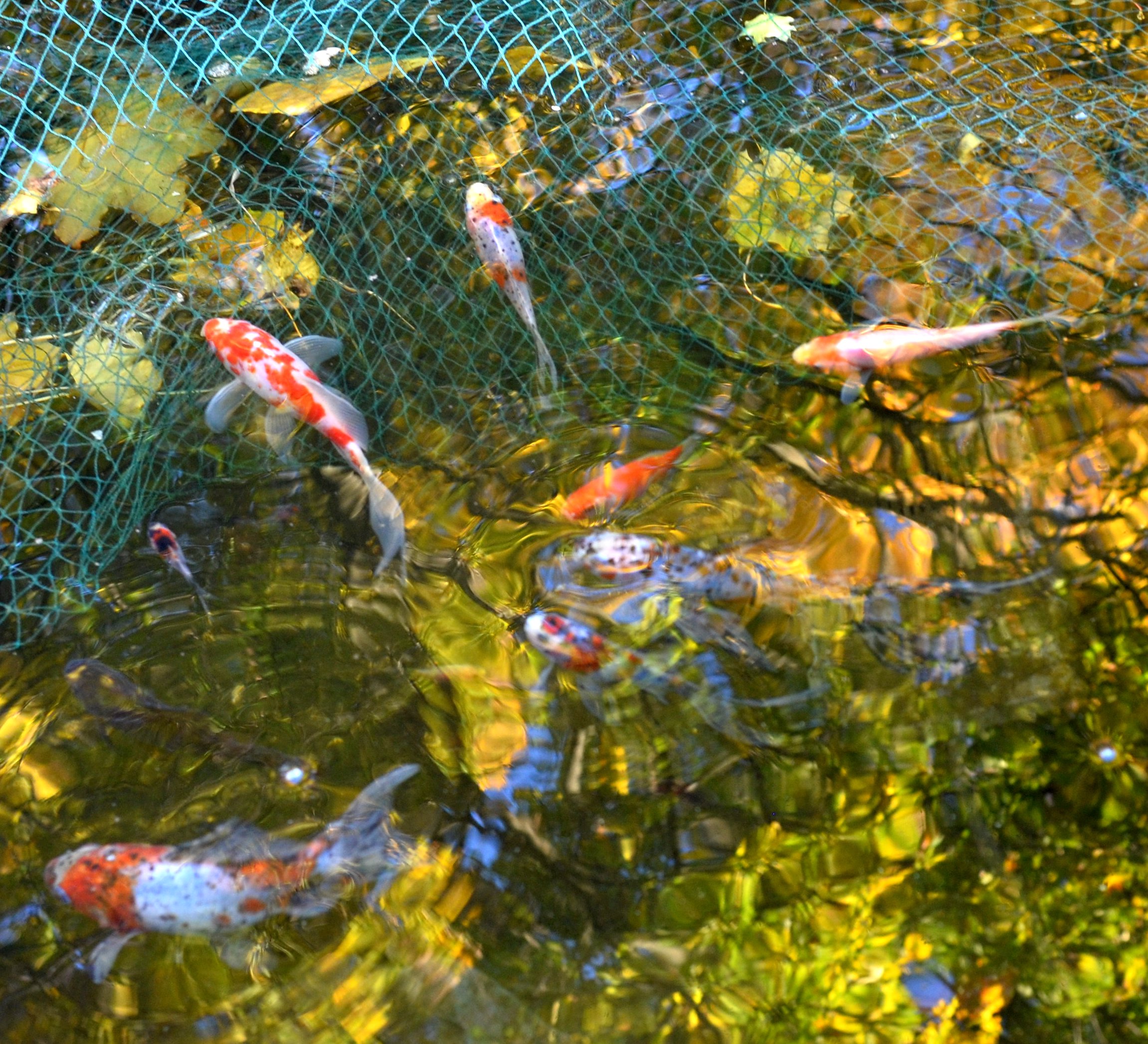

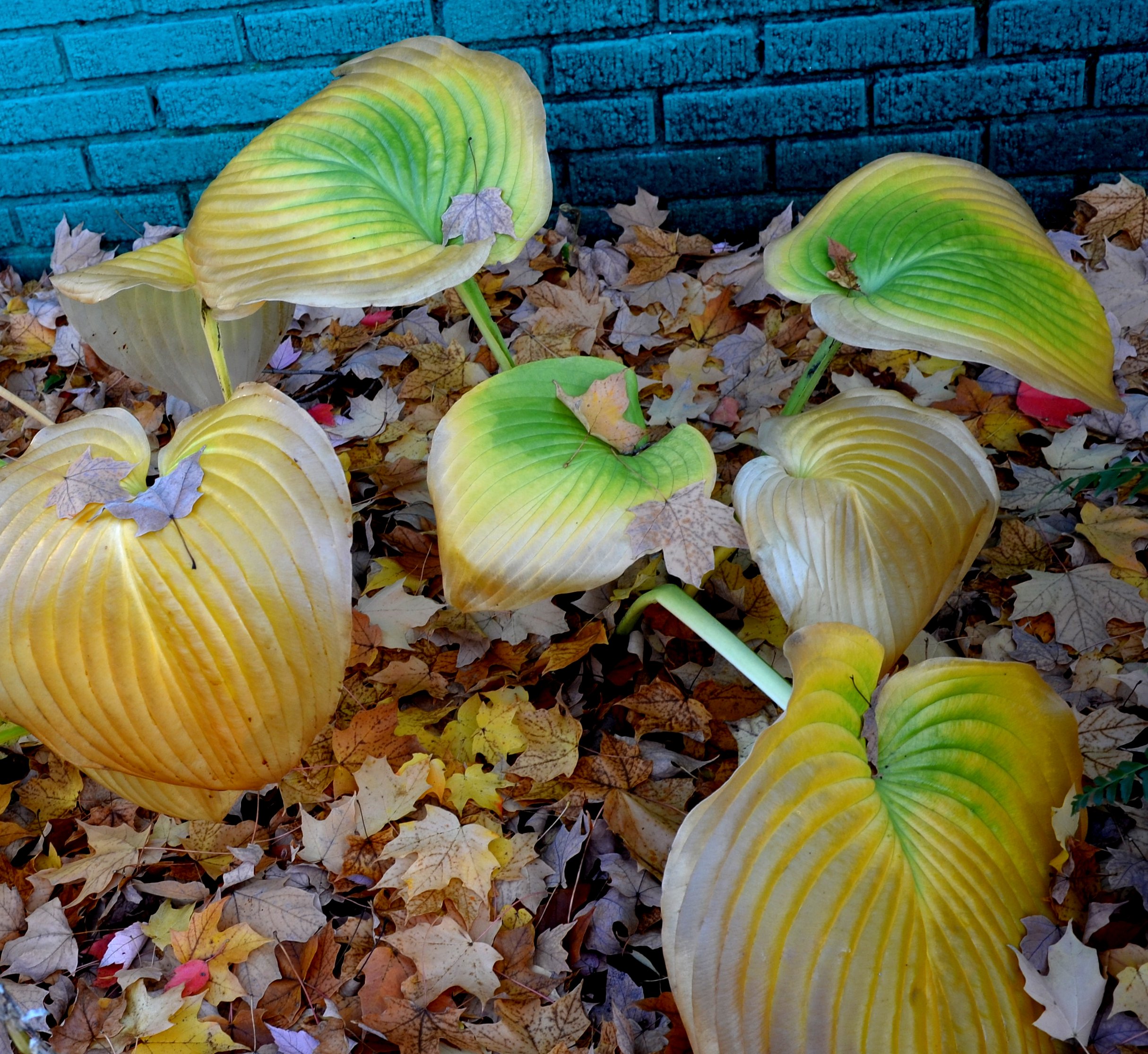
Here is the state of the world this week. I've pulled back the leaf net so you can see the fish as they appear to be swimming in the reflections of the trees. In my next-door neibhbors' yard, the swamp milkweed is trying to defy nature by continuing to bud and bloom. And now all the hostas, which were such nice places for the ichneumons to play, are falling into limp leaves.
I would try clicking on the image. If the little "+" sign appears, it means you can enlarge again. While it is in "+" mode, click on something you want to see more clearly and it will zoom to that section. Then the info is displayed in the address line above. If the image has been cropped
so that clicking on it doesn't result in a larger picture, you can always hit control-plus to increase the size of the image.
No ants again this week, but these two kinds of barklouses (Echmepteryx hageni and Graphopsocus cruciatus) are still here.

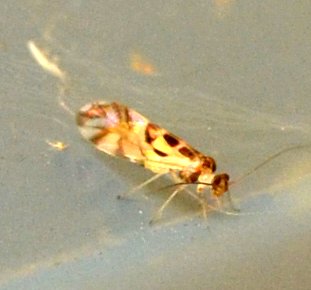
The Asian lady beetles are thinning out as food disappears, but I found this one in a shady spot on the front porch. Most of the beetles are now very very small. The next little red one is so little it is hard to see any color in it without a lens. And here is a good-sized redbud bruchid, the little weevil whose young eat the seeds out of the redbud pods.
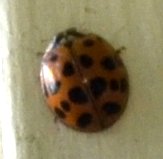
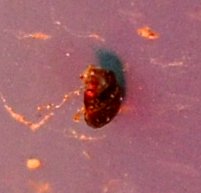
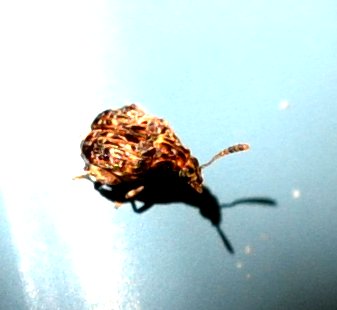
Here is a brown bug that is actually big enough to see. In a little less light it almost looks black. They may both be in the genus Drymus.
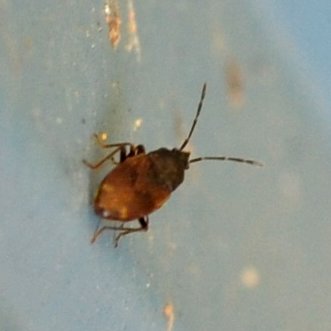

This next image is of another kind of damsel bug. At first I didn't recognize it, but then I saw the thick front legs (what they call raptorial legs - for capturing and holding prey) and the tube tucked under its "chin" that it can use to pierce and suck nourishment from a less fortunate prey. Us damsels are rough! It looks like Nabis americoferus.

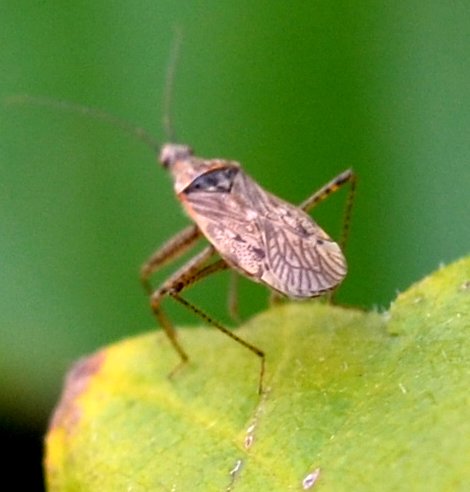
The little white leafhoppers that give up their colored elements only under magnification were still around up until a couple of days ago. Here are two color schemes. And here is a mystery bug that looks very soft-skinned. In its picture there is a small item that I thought at first was a nymph, but now don't have any idea. These first two were in genus Arboridia until it became changed in what is called a Taxon Swap to Erythridula. The third may be a Barklouse.
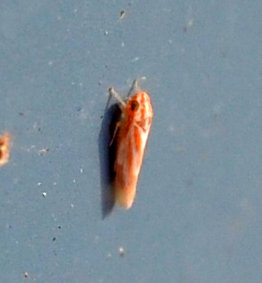
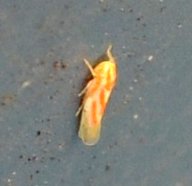

Finally! The Western Conifer Seed Bug is back! We saw them last in April of this year. Last year they showed up on October 13 in this yard. They showed up in Lansing at Tess's place on October 20. But this year November 11 was the day I saw the only one so far in this yard! Don't worry, it's close enough. Another Small Milkweed Bug was sitting on the siding of the shop too, where I was again expecting to see a Boxelder Bug. And here is that little reddish stink bug, sitting as usual on the wall. (It has actually been a week or three since I've seen one.)
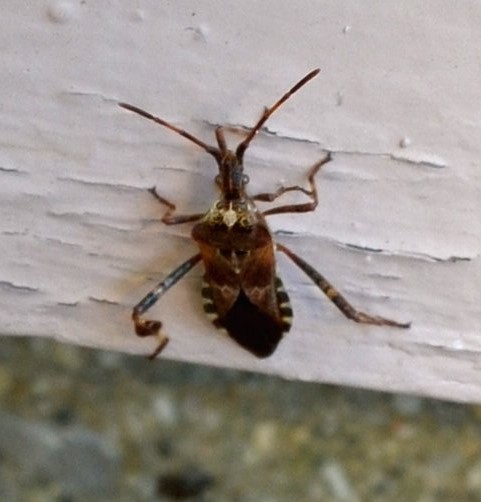
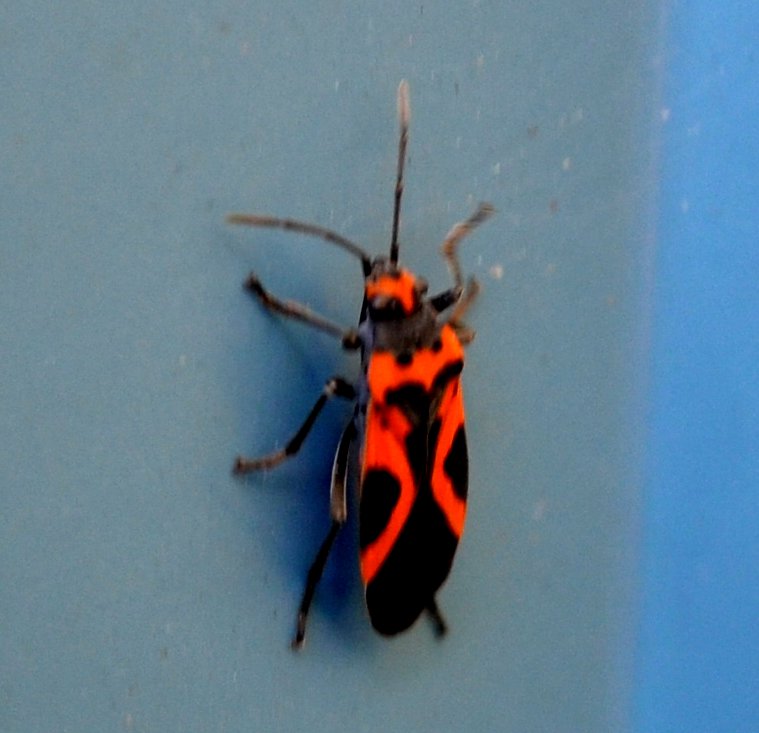
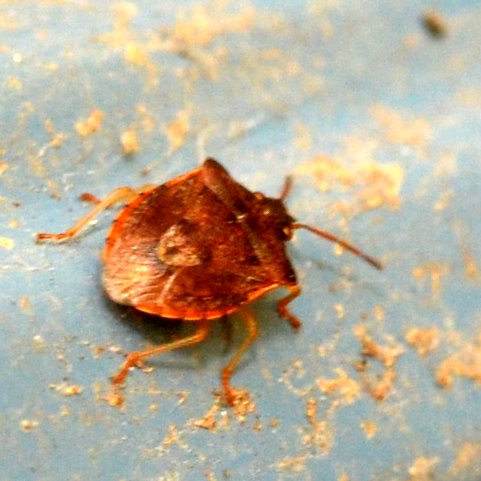
The silken cases were still to be found being dragged along up AND down the wall. Friends, why haven't I ever figured out what is the engine inside that silken chassis? But I haven't. In fact, each time I submit a picture of one of any of theese cases, it seems new and not a source of much interest from case-dragging experts. Finally, here's an old one (from this year or last?).
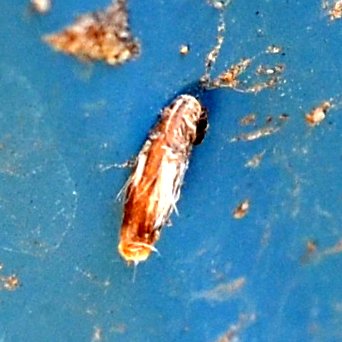
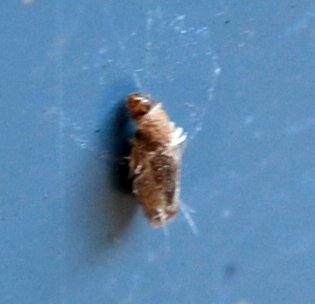

The euonymus in front of the house is finally reddening up. Will it get any brighter? We don't know since different parts of other euonymus fire bushes have already finished "blooming". The bit of "blue fuzz" in the next image is just that. I was so excited to have seen anything, even an aphid, that I imagined that "Fluffy" here was a tiny insect or spider. Here in my neighbors' yard is a milkweed seed pod opening in the breeze. Come over my fence, seeds!
 11 6 16 1.jpg)
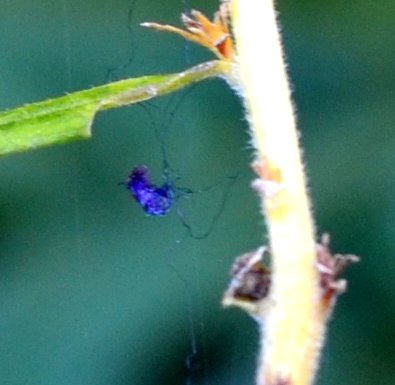
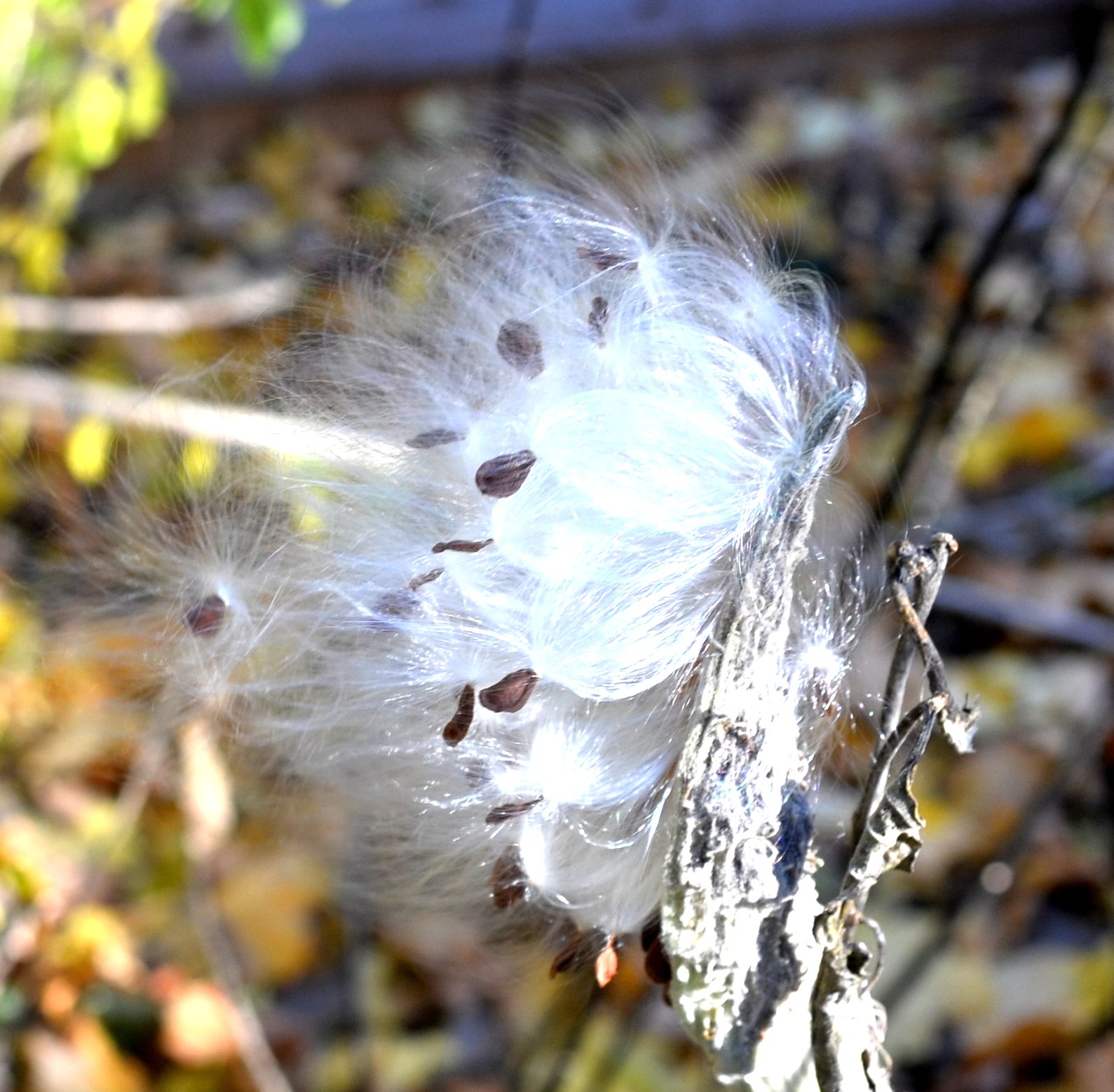
Do you remember the March flies? They came out in force in the spring. Now reading up on them, it transpires that there are spring Bibios and fall Bibios. And most of the fall ones are Bibio longipes or Bibio slossonae. Quiz: what does "longipes" mean? (long-legged). Another quiz question: in these images, which are the males and which are the females? At risk of boring you, one way you can sex some of the flies is to see if the eyes are so large that they come together along the "part" and generally look like big round balls. If they do, the fly is a boy. And if the eyes are so small that they seem to be shrunk against the side of the head (especially in the case of Bibio species) the fly is a girl. I almost got into trouble there talking about "your fly", sorry boys. This last one, a female with red legs, looks to me like one we've seen before.
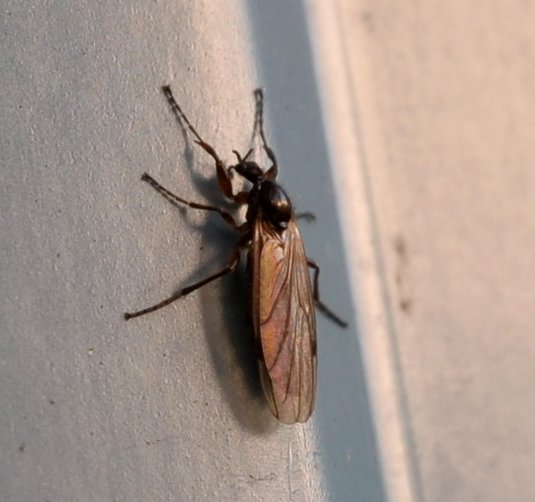
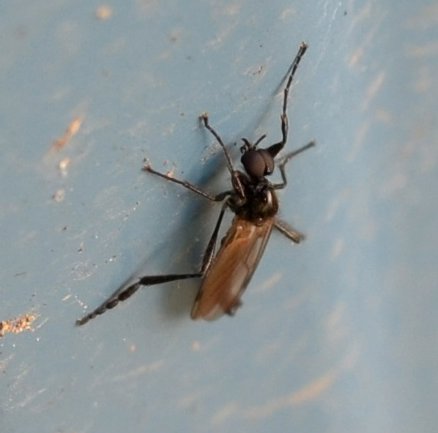
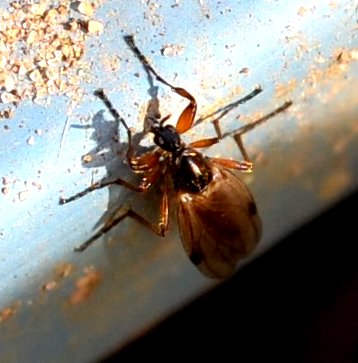
Here are some mosquitoes and mosquito lookalikes. First is a crane fly (long legs give it away), then a fungus gnat, with its spiky legs, then two mosquitoes. If I can find a midge, I'll try to show it to contrast with a mosquito. Apparently, midges don't show a proboscis.
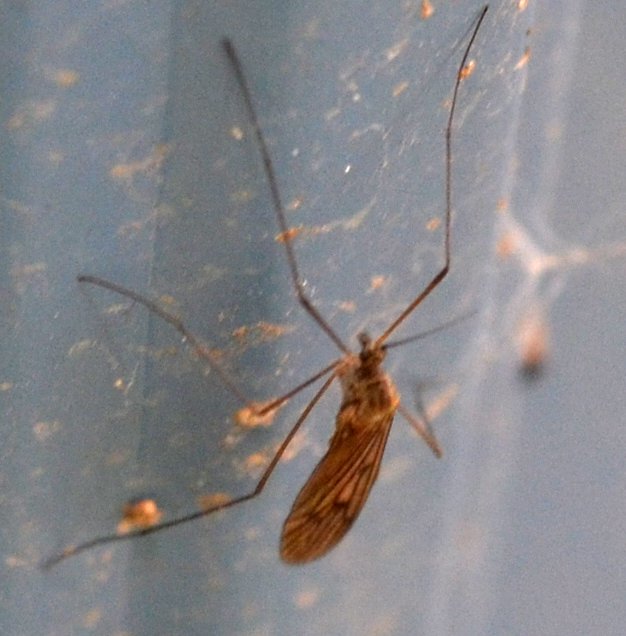
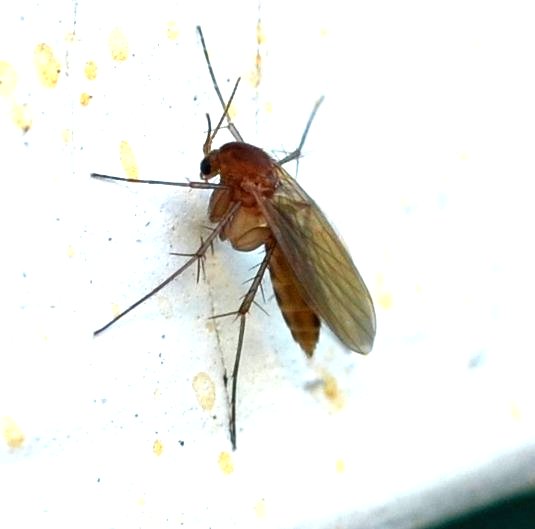
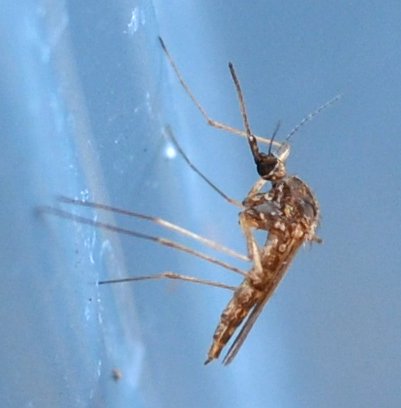
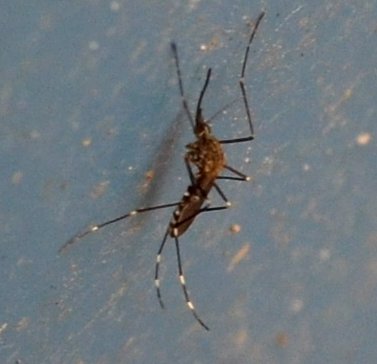
Three more flies. All are mysteries to me (meaning I haven't identified them yet), except that the first one, the one with the blue body, may be a closer relative to our beloved house fly.

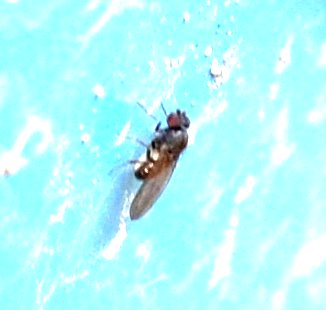

Someone wriggled out of its skin, leaving this pretty shell. I wish I had more spiders to show you, but the same old ones seem to be ensconced in their places for now, leaving us with mostly ones we already know. Thank goodness for the common house spiders. They divvy up their territory as infants. Each day I can go out and find the ones that were in the same positions before, only grown a bit. Even their babies are capable of wrapping up a freezer-ready bag of victuals.
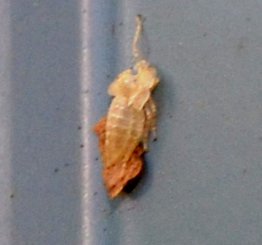

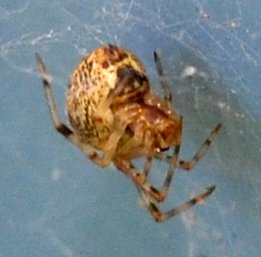
One of the fascinating things about spiders is how some of them seem to have humanoid faces emblazoned on them, in this case on this grass spider's butt. Click on the picture to see my interpretation of the face. Note: the "nose" is actually the spinneret. The next image is probably of a baby House Spider with some kind of mystery prey all wrapped up. Finally, a round-abdomened spider, which probably means it is a kind of cobweb spider.
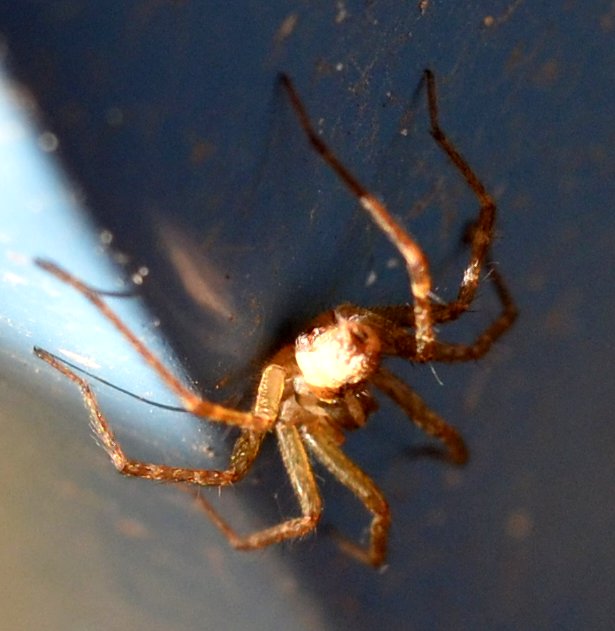
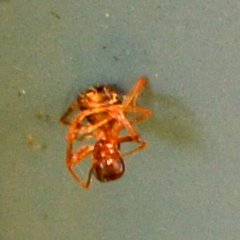

This wasp, probably genus Vespula (yellow-jackets) was slowly dragging itself up the fence. I'm still trying to put the other markings together with the face. You can count the segments in the middle "lateral" picture to get seven, which marks it as a male.
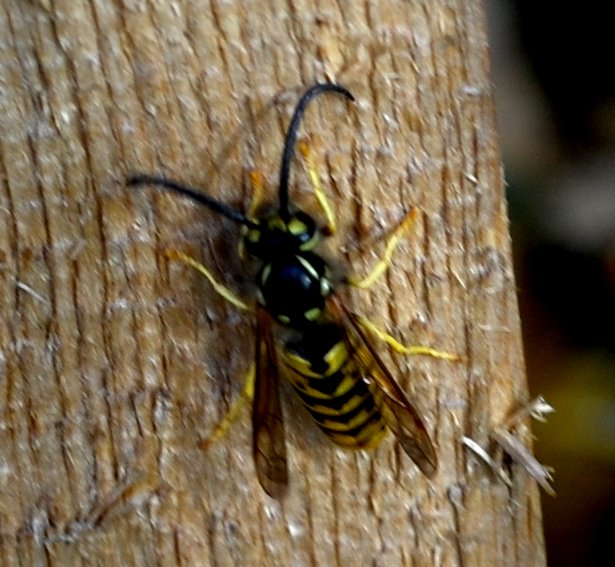

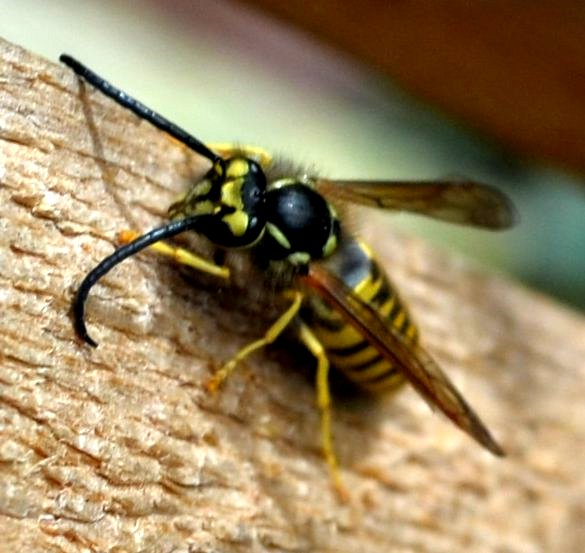
A rare treat for you! Our fellow arachnophile, and a great friend that I did not know was also an accomplished parodist, has
adapted a song by Alan J. Lerner from My Fair Lady (Without You) by changing all the "without you"s to "despite Trump"s and making a number of other clever changes. She said I could post it. The parodist is Biddy Greene, retired maths lecturer from the Engineering Faculty at the University of Cape Town.
A CHEER-UP SONG
Love, Martha
Back to November 6
On to November 27
Back to 2016 menu
Back to main menu
copyright Martha O'Kennon 2016
























 11 6 16 1.jpg)




















